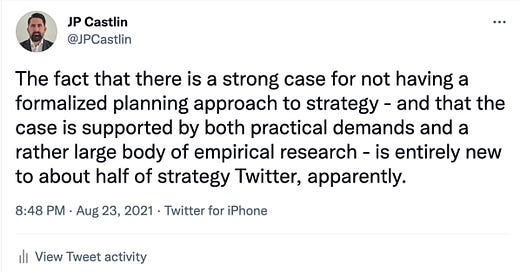Friends,
Earlier this week, somewhat peeved by people speaking very loudly in certain terms concerning matters they clearly did not understand, I put out a tweet noting that there is a rather strong case for not having a formalized strategic plan.
To some, as one would expect, the statement turned out to be about as welcome as a fart in a spacesuit. Many…




